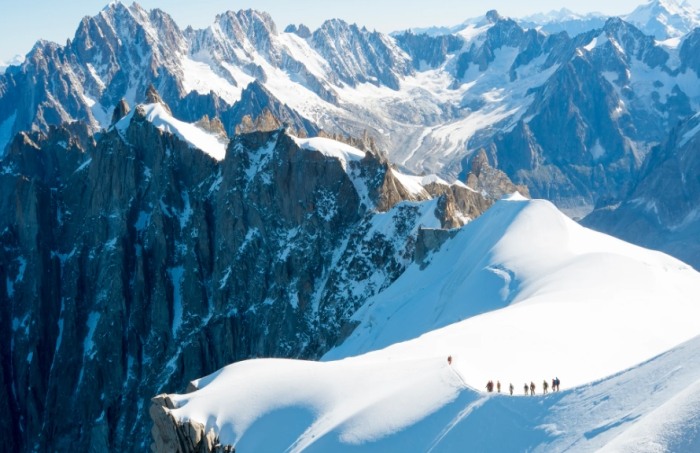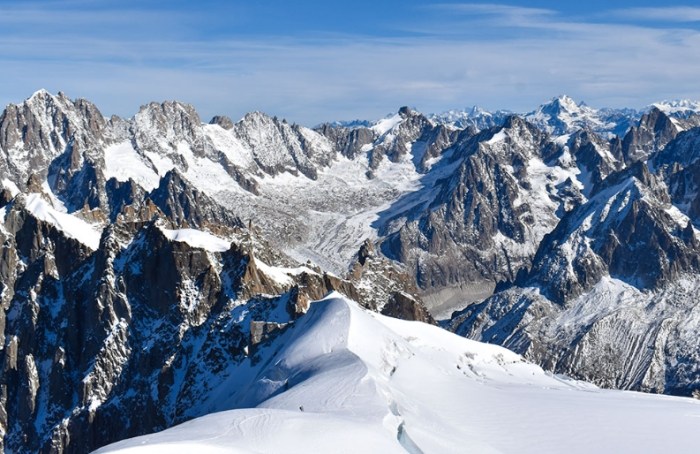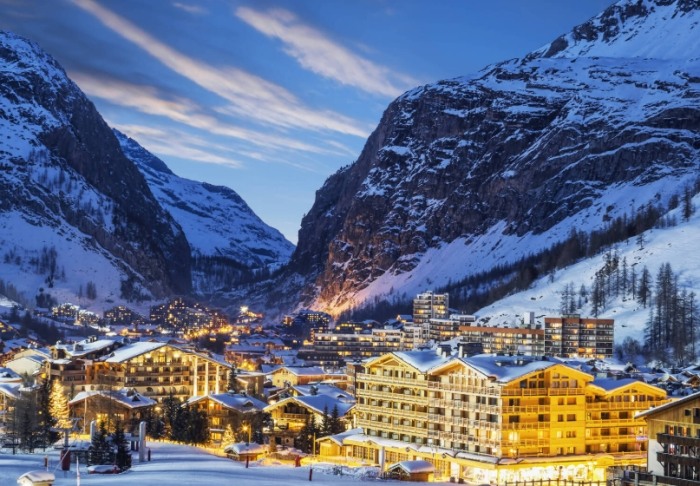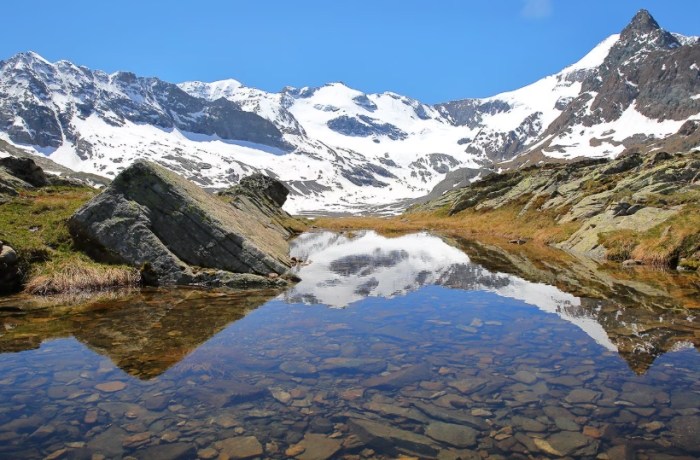French Alps: Scenic Routes, Chamonix to Annecy
Advertisements
Ready to conquer the French Alps? Explore Europe's premier mountain paradise—from Chamonix's legendary ski slopes to Mont Blanc's hiking trails. Discover charming alpine villages, summer cycling routes, and thermal spas like Évian. Whether you seek winter sports, Via Ferrata adventures, or Savoyard fondue with panoramic views, this guide covers top resorts, weather tips, and hidden gems across Haute-Savoie and beyond!
Table of Contents
Introduction to the French Alps

The French Alps, a majestic mountain range that stretches across the southeastern part of France, are a testament to nature's grandeur and human resilience. As a local who has grown up amidst these peaks, I am thrilled to share the secrets, history, and charm of this remarkable region. The Alps are not just a geographical wonder but also a melting pot of cultures, traditions, and outdoor adventures. Whether you're a history buff, a nature lover, or an adrenaline junkie, the French Alps have something to offer everyone.
Key Attractions in the French Alps

Mont Blanc: The Crown Jewel of the Alps
Historical Background
Mont Blanc, standing at an impressive 4,808 meters (15,774 feet), is the highest peak in the Alps and a symbol of pride for the French. Its first recorded ascent was in 1786 by Jacques Balmat and Michel-Gabriel Paccard, marking the beginning of a long history of mountaineering in the region. Over the centuries, Mont Blanc has attracted explorers, scientists, and adventurers from around the world, each leaving their mark on its slopes.
Cultural Significance
Mont Blanc holds a special place in the hearts of the local people. It is not just a mountain but a spiritual and cultural icon. The annual Tour du Mont Blanc, a long-distance hiking trail that circles the mountain, is a testament to the enduring connection between the locals and their natural heritage. The trail passes through France, Italy, and Switzerland, offering hikers a unique cultural and geographical experience.
Natural and Human Landscapes
The area around Mont Blanc is a paradise for nature lovers. The Aiguille du Midi cable car, one of the highest in the world, offers breathtaking views of the surrounding peaks and glaciers. The Mer de Glace, France's largest glacier, is another must-see attraction, accessible via a scenic train ride from Chamonix. For those seeking a more immersive experience, guided glacier hikes and ice climbing tours are available.
Operating Hours and Ticket Prices
- Aiguille du Midi Cable Car: Operates daily from early June to late September, with reduced hours in the shoulder seasons. Tickets cost approximately €60 for a round trip.
- Mer de Glace Train: Runs throughout the year, with more frequent departures in the summer. A return ticket costs around €30.
Transportation
Chamonix, the gateway to Mont Blanc, is easily accessible by train from major French cities like Paris and Lyon. The train journey offers stunning views of the Alps and takes approximately 5-6 hours from Paris. Once in Chamonix, local buses and taxis are available to take you to the various attractions.
Best Time to Visit
The best time to visit Mont Blanc is from late June to early September when the weather is most favorable for outdoor activities. However, winter sports enthusiasts can also enjoy skiing and snowboarding from December to April.
Special Activities
- Mountaineering: Guided ascents of Mont Blanc are available for experienced climbers.
- Paragliding: Soar above the peaks and enjoy a bird's-eye view of the Alps.
- Stargazing: The clear mountain skies offer unparalleled stargazing opportunities.
Accommodation Recommendations
- Chamonix: Offers a wide range of accommodations, from luxury hotels to budget-friendly hostels.
- Les Houches: A quieter alternative to Chamonix, with beautiful chalets and guesthouses.
Culinary Delights
- Raclette: A traditional Swiss-French dish made with melted cheese, potatoes, and pickles.
- Tartiflette: Another cheesy delight, featuring potatoes, bacon, onions, and Reblochon cheese.
- Local Wines: The Savoie region is known for its excellent white wines, perfect for pairing with mountain cuisine.
Tips for Visitors
- Be prepared for sudden weather changes and pack accordingly.
- Book accommodations and guided tours in advance, especially during peak season.
- Respect the local culture and environment by following Leave No Trace principles.
Chamonix-Mont-Blanc: The Adventure Capital
Historical Background
Chamonix-Mont-Blanc, often simply referred to as Chamonix, is a town that has been synonymous with adventure since the 18th century. It gained international fame as the host of the first Winter Olympics in 1924, cementing its status as a winter sports mecca. Today, Chamonix continues to attract athletes, tourists, and outdoor enthusiasts from around the globe.
Cultural Significance
Chamonix is a vibrant town with a rich cultural heritage. The annual Mountain Film Festival, held in December, showcases the best in adventure and mountain films. The town also hosts numerous festivals and events throughout the year, celebrating everything from music to local cuisine.
Natural and Human Landscapes
Chamonix is surrounded by some of the most spectacular scenery in the Alps. The Vallée Blanche, a glacial valley accessible via cable car, offers stunning views of the surrounding peaks. The town itself is a charming mix of traditional Alpine architecture and modern amenities, with cobblestone streets, boutique shops, and cozy cafes.
Operating Hours and Ticket Prices
- Cable Cars and Lifts: Operating hours vary by season, but most are open from early morning to late afternoon. Ticket prices range from €10 to €50, depending on the destination and season.
- Museums and Attractions: Many museums and attractions in Chamonix offer free entry or discounted rates for children and seniors.
Transportation
Chamonix is well-connected by train and bus. The Mont Blanc Express train runs from St-Gervais-les-Bains to Martigny in Switzerland, passing through Chamonix. Local buses provide easy access to the various ski resorts and attractions in the area.
Best Time to Visit
Chamonix is a year-round destination, but the best time to visit depends on your interests. Winter (December to April) is ideal for skiing and snowboarding, while summer (June to September) offers hiking, mountain biking, and other outdoor activities.
Special Activities
- Skiing and Snowboarding: Chamonix boasts some of the best ski slopes in the Alps, catering to all skill levels.
- Rock Climbing: The surrounding peaks offer endless opportunities for rock climbing and bouldering.
- Mountain Biking: Explore the trails and paths on two wheels, with rental shops and guided tours available.
Accommodation Recommendations
- Luxury Hotels: The Hôtel Mont-Blanc and the Aiguille du Midi Hotel offer luxurious accommodations with stunning views.
- Budget-Friendly Options: The Auberge de Jeunesse (Youth Hostel) and various guesthouses provide affordable stays for budget-conscious travelers.
Culinary Delights
- Fondue: A classic Swiss-French dish, perfect for sharing with friends and family.
- Croûtes au Fromage: Toasted bread topped with melted cheese, often served with a side of ham or mushrooms.
- Local Beers: The region is home to several microbreweries, offering a variety of craft beers.
Tips for Visitors
- Rent ski equipment in advance to avoid long lines at the rental shops.
- Check the weather forecast and avalanche warnings before heading out on outdoor adventures.
- Try to learn a few basic French phrases; it will go a long way in enhancing your experience.
Annecy: The Venice of the Alps
Historical Background
Annecy, often referred to as the "Venice of the Alps," is a picturesque town located on the shores of Lake Annecy. Its history dates back to the Roman era, with evidence of settlements found in the area. Over the centuries, Annecy has been ruled by various powers, including the Counts of Geneva and the Dukes of Savoy, leaving behind a rich architectural and cultural heritage.
Cultural Significance
Annecy is a cultural hub, known for its annual International Animation Film Festival, which attracts filmmakers and enthusiasts from around the world. The town also hosts numerous festivals and events throughout the year, celebrating everything from art to music to local traditions.
Natural and Human Landscapes
Annecy is surrounded by stunning natural beauty. Lake Annecy, one of the cleanest lakes in Europe, offers swimming, boating, and fishing opportunities. The town itself is a charming mix of medieval architecture, cobblestone streets, and canals, earning it the nickname "Venice of the Alps."
Operating Hours and Ticket Prices
- Museums and Attractions: Most museums and attractions in Annecy are open from 10:00 AM to 6:00 PM, with some closing on Mondays. Ticket prices range from €5 to €15, depending on the attraction.
- Boat Tours: Operate throughout the day, with prices starting at around €15 for a one-hour tour.
Transportation
Annecy is easily accessible by train from major French cities like Paris and Lyon. The train journey takes approximately 3-4 hours from Paris. Once in Annecy, local buses and taxis are available to take you around town.
Best Time to Visit
The best time to visit Annecy is from May to September when the weather is warm and sunny, perfect for outdoor activities. However, the town is also beautiful in the winter, with a festive atmosphere and opportunities for ice skating and winter sports.
Special Activities
- Lake Activities: Swimming, boating, and fishing are popular activities on Lake Annecy.
- Cycling: Rent a bike and explore the scenic paths around the lake.
- Hiking: The surrounding mountains offer numerous hiking trails with stunning views.
Accommodation Recommendations
- Luxury Hotels: The Imperial Palace and the Hôtel des Alpes offer luxurious accommodations with lake views.
- Budget-Friendly Options: The Auberge de Jeunesse and various guesthouses provide affordable stays for budget-conscious travelers.
Culinary Delights
- Poisson du Lac: Fresh fish from Lake Annecy, often served grilled or baked.
- Tarte aux Myrtilles: A blueberry tart, a local specialty.
- Local Cheeses: The region is known for its excellent cheeses, including Reblochon and Tomme de Savoie.
Tips for Visitors
- Bring comfortable shoes for walking around the town and exploring the lake.
- Try to visit during one of the town's festivals for a truly authentic experience.
- Rent a boat or paddleboard to explore Lake Annecy at your own pace.
Additional Attractions and Activities

Grenoble: The Capital of the French Alps
Historical Background
Grenoble, often referred to as the "Capital of the French Alps," is a city with a rich history dating back to the Roman era. It has been an important center of trade, culture, and education for centuries, with the University of Grenoble, founded in 1339, being one of the oldest in Europe.
Cultural Significance
Grenoble is a vibrant city with a thriving arts and culture scene. The Musée de Grenoble, one of the largest museums in France, showcases a vast collection of art from the Middle Ages to the present day. The city also hosts numerous festivals and events throughout the year, including the International Festival of Digital Arts.
Natural and Human Landscapes
Grenoble is surrounded by the stunning natural beauty of the Alps. The Bastille, a historic fortress overlooking the city, offers panoramic views of the surrounding mountains. The city itself is a mix of modern architecture and historic buildings, with cobblestone streets and charming cafes.
Operating Hours and Ticket Prices
- Museums and Attractions: Most museums and attractions in Grenoble are open from 10:00 AM to 6:00 PM, with some closing on Mondays. Ticket prices range from €5 to €15, depending on the attraction.
- Cable Car to the Bastille: Operates throughout the day, with a round-trip ticket costing around €10.
Transportation
Grenoble is well-connected by train and bus. The TGV high-speed train runs from Paris to Grenoble in approximately 3 hours. Local buses and trams provide easy access to the various attractions in the city.
Best Time to Visit
The best time to visit Grenoble is from May to September when the weather is warm and sunny, perfect for exploring the city and its surroundings. However, the city is also beautiful in the winter, with a festive atmosphere and opportunities for winter sports.
Special Activities
- Hiking and Mountaineering: The surrounding mountains offer numerous hiking trails and mountaineering opportunities.
- Skiing and Snowboarding: Several ski resorts are located within easy reach of Grenoble.
- Cultural Tours: Explore the city's historic sites and museums with a guided tour.
Accommodation Recommendations
- Luxury Hotels: The Grand Hôtel de l'Europe and the Hôtel Mercure Grenoble Centre Président offer luxurious accommodations in the heart of the city.
- Budget-Friendly Options: The Auberge de Jeunesse and various guesthouses provide affordable stays for budget-conscious travelers.
Culinary Delights
- Gratin Dauphinois: A classic French dish made with potatoes, cream, and cheese.
- Quiche Lorraine: A savory tart filled with eggs, cream, bacon, and onions.
- Local Wines: The Rhône Valley, located nearby, is known for its excellent red and white wines.
Tips for Visitors
- Rent a bike to explore the city and its surroundings at your own pace.
- Try to visit during one of the city's festivals for a truly authentic experience.
- Learn a few basic French phrases to enhance your interactions with the locals.
Ski Resorts in the French Alps
Top Ski Resorts
The French Alps are home to some of the best ski resorts in the world. Here's a list of the top ski resorts, along with their key features:
| Resort Name | Location | Number of Slopes | Highest Point (m) | Best For |
|---|---|---|---|---|
| Val Thorens | Savoie | 150 | 3,230 | Advanced Skiers, Snowboarding |
| Courchevel | Savoie | 150 | 2,738 | Luxury, Family-Friendly |
| Tignes | Savoie | 150 | 3,456 | All Levels, Glacier Skiing |
| Les Deux Alpes | Isère | 96 | 3,600 | Glacier Skiing, Freestyle |
| Méribel | Savoie | 150 | 2,952 | Family-Friendly, Intermediate Skiers |
Operating Hours and Ticket Prices
- Ski Lifts: Operating hours vary by resort, but most are open from 8:30 AM to 4:30 PM. Ticket prices range from €40 to €60 per day, depending on the resort and season.
- Ski Rental: Rental shops are available at each resort, with prices starting at around €20 per day for equipment.
Transportation
Most ski resorts in the French Alps are accessible by train and bus. The TGV high-speed train runs from Paris to several major cities in the Alps, including Chambéry and Grenoble. From there, local buses and shuttles provide easy access to the various ski resorts.
Best Time to Visit
The best time to visit the ski resorts in the French Alps is from December to April when the snow conditions are optimal. However, some resorts, like Tignes and Les Deux Alpes, offer glacier skiing year-round.
Special Activities
- Skiing and Snowboarding: The primary activity at these resorts, with slopes catering to all skill levels.
- Snowshoeing: Explore the winter wonderland on foot with snowshoes.
- Ice Skating: Many resorts have outdoor ice rinks for a fun winter activity.
Accommodation Recommendations
- Luxury Chalets: Many ski resorts offer luxurious chalets with stunning views and modern amenities.
- Budget-Friendly Options: Guesthouses and hostels are available at most resorts, providing affordable stays for budget-conscious travelers.
Culinary Delights
- Raclette and Fondue: Classic winter dishes, perfect for sharing after a day on the slopes.
- Local Sausages: Try the various sausages made in the region, often served with mashed potatoes and sauerkraut.
- Hot Chocolate: Warm up with a cup of rich, creamy hot chocolate at one of the resort's cafes.
Tips for Visitors
- Book accommodations and lift tickets in advance, especially during peak season.
- Rent ski equipment in advance to avoid long lines at the rental shops.
- Check the weather forecast and avalanche warnings before heading out on the slopes.
Q&A

1. Where are the Alps in France?
The French Alps are located in the southeastern part of France, stretching across several regions including Rhône-Alpes (now part of Auvergne-Rhône-Alpes) and Provence-Alpes-Côte d'Azur. The range borders Italy to the east and Switzerland to the north, with iconic peaks like Mont Blanc marking the highest point in the Alps.
2. What major cities are in the French Alps?
Several major cities and towns are located in or near the French Alps, including:
- Grenoble: Often referred to as the "Capital of the French Alps," Grenoble is a vibrant city with a rich history and culture.
- Chamonix-Mont-Blanc: A world-famous adventure capital, known for its skiing, mountaineering, and stunning scenery.
- Annecy: Known as the "Venice of the Alps," Annecy is a picturesque town on the shores of Lake Annecy.
- Lyon: While not strictly in the Alps, Lyon is a major city in the Rhône-Alpes region and serves as a gateway to the mountains.
3. Why are the French Alps famous?
The French Alps are famous for several reasons:
- Natural Beauty: The range is home to some of the most stunning scenery in Europe, including majestic peaks, glaciers, and lakes.
- Outdoor Activities: The Alps offer a wide range of outdoor activities, from skiing and snowboarding in the winter to hiking, mountain biking, and rock climbing in the summer.
- Cultural Heritage: The region has a rich cultural heritage, with historic towns, museums, and festivals celebrating everything from art to music to local traditions.
- Culinary Delights: The French Alps are known for their delicious cuisine, including local cheeses, wines, and traditional dishes like raclette and fondue.
4. Which is better, Swiss or French Alps?
The choice between the Swiss and French Alps depends on your preferences and interests. Here's a comparison to help you decide:
- Scenery: Both ranges offer stunning scenery, but the Swiss Alps are often praised for their pristine beauty and well-maintained trails. The French Alps, on the other hand, offer a more diverse landscape, with a mix of rugged peaks, glaciers, and lakes.
- Activities: Both ranges offer a wide range of outdoor activities, but the Swiss Alps are particularly renowned for their skiing and snowboarding. The French Alps, however, offer a more varied experience, with opportunities for hiking, mountain biking, rock climbing, and more.
- Culture: The Swiss Alps have a strong Swiss-German influence, with a focus on tradition and craftsmanship. The French Alps, on the other hand, have a more French-Mediterranean feel, with a vibrant arts and culture scene.
- Cost: Generally speaking, the Swiss Alps are more expensive than the French Alps, with higher prices for accommodations, lift tickets, and dining.
About the author:My name is Chloe, a lifelong Parisian with an insatiable passion for sharing the magic of la belle France. Through this blog, I’ll take you beyond the postcard clichés to uncover the soul of France—its riveting history, hidden-gem destinations, decadent cuisine, and the art de vivre that makes this country unforgettable. Whether you’re planning a trip, a foodie craving authentic recipes, or a culture enthusiast, join me as we explore everything from cobblestone villages to haute couture boutiques.
Advertisements